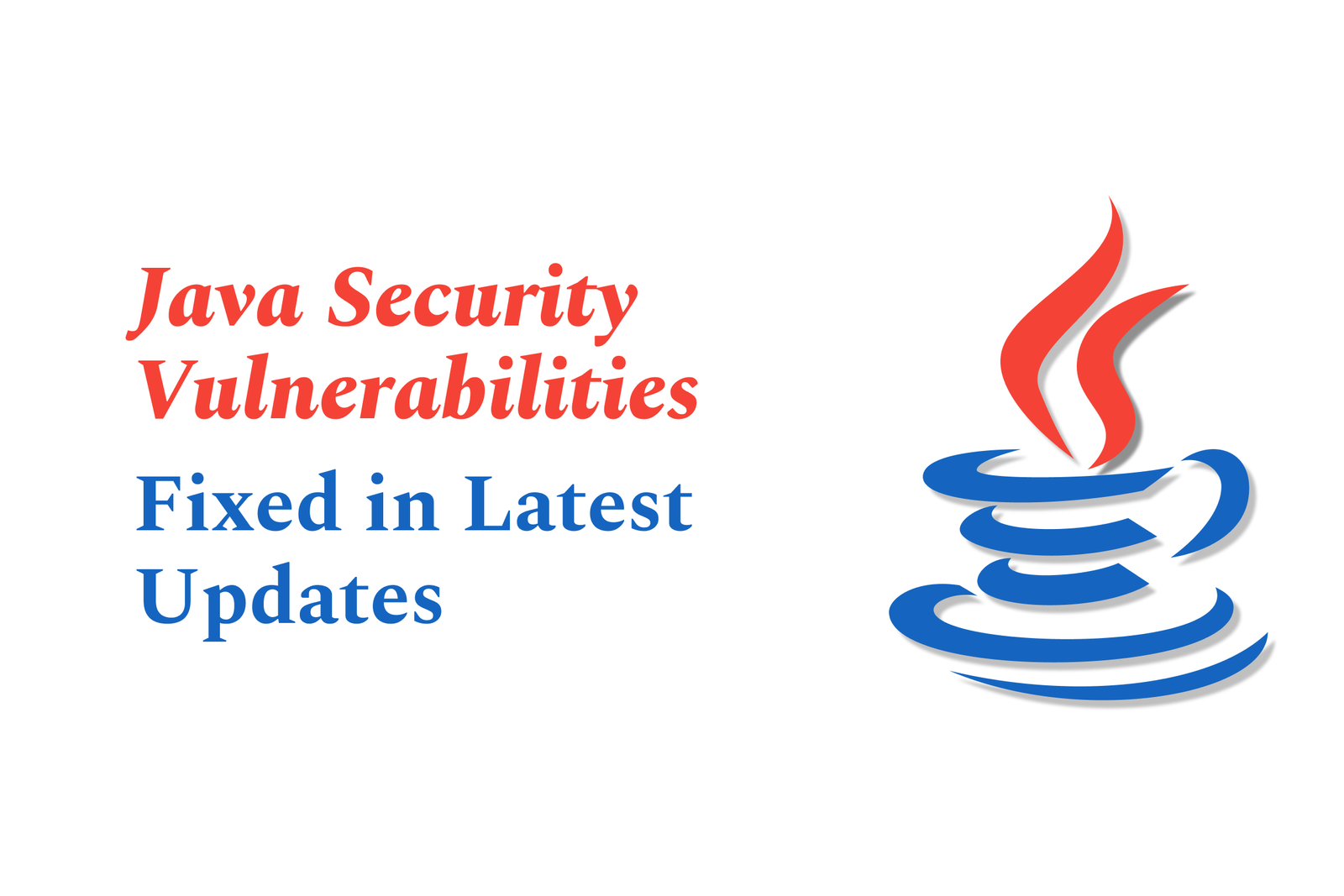Java Security Vulnerabilities Fixed in Latest Updates
The latest Java updates fix critical security vulnerabilities, including flaws in deserialization, code execution, and configuration risks. Applying these patches ensures safer Java environments, protecting applications from exploits and enhancing overall system security.
Java Security Vulnerabilities Fixed in Latest Updates
1 ) Overview of Java Security Patches
Recent critical patch updates have addressed multiple security vulnerabilities in Java SDKs and runtimes.
These updates include fixes for both Java SE and Java related components to enhance security posture.
Oracle and IBM regularly release Critical Patch Updates (CPUs) that are cumulative, containing previous fixes alongside new ones.
2 ) Key Sources of Security Updates
Oracle’s Java SE Critical Patch Updates (e.g., February 2013, with subsequent schedules in 2013 2014 ) provide comprehensive security and non security fixes for Java products.
IBM provides periodic security updates for its Java SDKs, with detailed bulletins listing version specific patches and vulnerabilities addressed.
Apache Logging Services highlight the importance of upgrading Log4j versions to avoid vulnerabilities, as Log4j 1 has reached End of Life.
3 ) Important Security Practices and Threat Models
Trusted configuration sources are critical; configurations should be secured, especially when loaded over the network.
JNDI and JMX configurations in Java based projects require secure authentication and connections to prevent exploits.
Java object serialization from untrusted sources should be avoided to mitigate deserialization vulnerabilities.
Software Distribution signing (e.g., GPG signatures) must be verified to ensure authenticity and integrity of Java components.
4 ) Addressing Known Vulnerabilities
Users are encouraged to upgrade to the latest Java versions and apply all CPU patches promptly.
Critical vulnerabilities such as denial of service (DoS), code execution, and insecure deserialization have been fixed in recent releases.
Vulnerability reporting processes and security models reinforce proactive security management for Java developers and enterprises.
5 ) Accessing Security Updates and Support
Customers should utilize official vendor sites (Oracle, IBM) and support portals for downloading patches and detailed security bulletins.
Special builds and fix packs are available for different Java versions and platforms to cater to specific user needs.
Continuous monitoring of security blogs, advisories, and policy updates is essential for staying informed about emerging threats and fixes.
Summary:
Maintaining Java security requires applying the latest critical patch updates provided by Oracle and IBM, securing configuration sources, avoiding unsafe practices like deserializing untrusted data, and verifying software authenticity through signature validation. Upgrading logging components (e.g., to Log4j 2 ) and following vendor guidance helps mitigate high risk vulnerabilities. Developers and organizations must stay current with security bulletins, implement fixes promptly, and follow recommended security best practices to protect Java applications.
https://justacademy.in/news-detail/best-new-android-apps-released-this-month
https://justacademy.in/news-detail/android-background-process-optimizations
https://justacademy.in/news-detail/flutter-typography-system-explained
https://justacademy.in/news-detail/building-responsive-ios-apps-for-apple-vision-pro
https://justacademy.in/news-detail/flutter-plugin-security-best-practices
Related Posts
In 2025, top Angular libraries offer modern, feature-rich components and tools for building dynamic web apps. From powerful data grids to low-code platforms like UI Bakery, these libraries enhance development speed, UI design, and scalability, making them essential for Angular developers.
Migrating from AngularJS to Angular 17 involves gradually upgrading your app by running both frameworks together using tools like ngUpgrade, rewriting components in TypeScript, and adopting Angular’s modern architecture to enhance performance, maintainability, and long-term support.
Angular state management tools help organize and handle app data efficiently, improving scalability and maintainability. Popular options include NgRx for robust, RxJS-based patterns, and newer Signal Store solutions that offer simpler, reactive approaches integrated tightly with Angular’s latest features.
RxJS in Angular empowers developers to manage asynchronous data streams with powerful operators like `forkJoin`, `combineLatest`, and `zip`. Mastering these key operators in 2025 is essential for building efficient, reactive applications that handle complex event sequences seamlessly.
Angular performance optimization in 2025 focuses on improving app speed and responsiveness by using techniques like OnPush change detection, lazy loading, efficient data caching, and AOT compilation. These practices reduce load times, enhance user experience, and ensure scalable, fast Angular applications.
In 2025, Angular remains preferred for large-scale, enterprise apps with its robust, all-in-one framework, while Vue attracts developers seeking simplicity and fast development for smaller projects. Both frameworks excel, with choice driven by project needs and team expertise.
Angular Signals are a new reactive primitive in Angular 16 that enable fine-grained, efficient change detection by automatically tracking dependencies and updating only affected parts of the UI. They simplify state management and boost app performance, revolutionizing Angular's reactivity model.
Angular interview questions to prepare in 2025 focus on core concepts like components, directives, data binding, routing, and dependency injection, along with TypeScript mastery and latest Angular features to ensure strong practical knowledge for building scalable, efficient web applications.
AngularJS reached its official end of support in January 2022, meaning no further updates or security patches. To ensure app security and performance, developers should consider migrating to modern Angular versions or seek third-party long-term support options if immediate migration isn’t possible.
The Angular Roadmap 2025 highlights upcoming features focused on improving developer experience and performance, including zoneless Angular, Signals integration, enhanced Forms, async data handling, improved HMR, and expanded Angular Material/CDK enhancements, driving modern, efficient web app development.










